One of the best things about the way they do this whole high school thing here is that it’s so kid-focused. Whenever we walk into a school on an open day, it’s Axa who is greeted and handed a flyer, folder, bag of brochures, pen, water bottle, or whatever they’re handing out at this particular school (she promptly hands it all over to me to carry for her, but still). The students and teachers focus on talking to the visiting kids, although they are also polite and willing to answer the parents’ questions. Because let’s be real, the kids are 11-12, and sometimes they are more interested in the bowl of snacks on the table than in asking insightful questions about their future education. Yesterday I shared a rueful smile that transcended culture and language with a Dutch mother whose son had just grabbed a giant handful of potato chips out of a consumer research survey on whether Lays or generic chips tasted better.
The careful focus on making the kids feel like their presence and opinions are important is just an outward manifestation of the fact that when all is said and done, it’s the kid making a list of her favourite schools, since after all it’s also the kid who will be attending that school for the next six years. As the administrator at my daughter’s primary school put it, “the parents choose the primary school, and the kids choose the secondary school.” (And in fact, Amsterdam primary schools have their own lottery for when kids start school at age four, which I will happily leave to some other blogger since I at least moved here with kids old enough that I won’t need to go through that particular nail-biter.)
An interesting consequence of the abundance of choices, the lottery, and the focus on the individual child, is that siblings may very well end up going to different schools. In primary school, this would be a logistical nightmare, since especially in the early years kids need to be dropped off to school, whether it’s on foot, by bicycle, bakfiets, or car. However, starting when they were 10 and 8, my kids would already cycle 2.5 km (1.5 miles) to school by themselves, which is quite normal here (although some routes are safer than others and finding a safe cycling route to school for them was quite a big priority when we were looking to buy a house). By the age of 12, it’s definitely the norm that kids will be getting themselves to school, either by bicycle or public transport.
The fact that the children are streamed here also means that, for example, if one child goes to a categorical gymnasium, a child in the same family who gets a lower advies will of necessity go to a different school. Even kids with the same advies might have different interests and talents, making different schools attractive to them. Some schools have more of a focus on arts and culture, whereas others are known for strong science departments. There’s a school with a heavy emphasis on sports, others with lots of opportunities for kids interested in drama, and the list goes on. There are also larger schools that cater to a number of different streams, for kids who might need to stream up or down from the level they’re given at age 11.
I think many families do end up with multiple kids at the same school, whether because of proximity, similarities in ability and interest, the older child having a great experience at a particular school, etc. However, I love the fact that each child can forge his or her own path.
For obvious reasons, Saturday morning is a popular time for school open houses, and yesterday Axa and I did a double header.
Fons Vitae Lyceum: This is another school I didn’t expect to be that great, but ended up quite liking. And not just because they were giving out Capri-Sun.
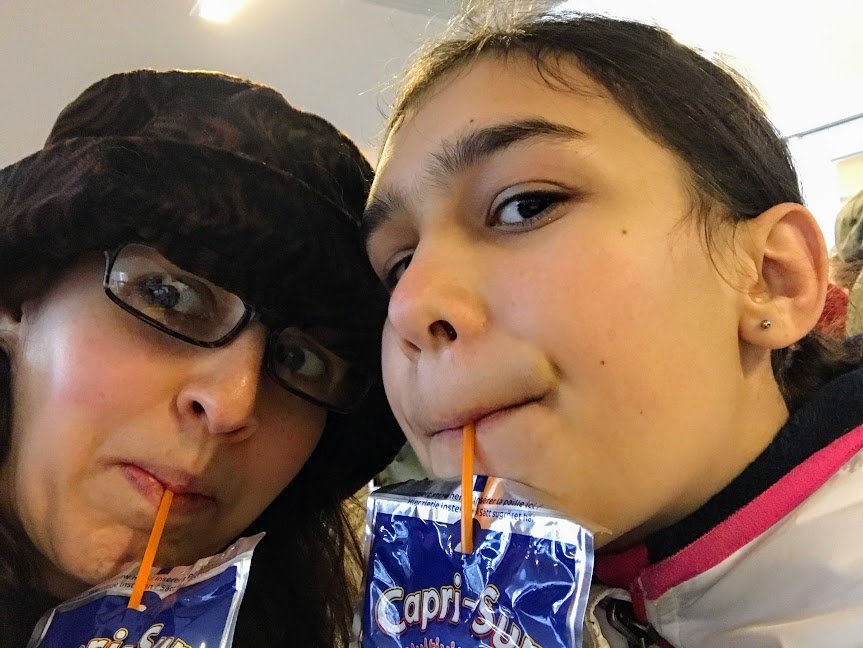
Like Het Amsterdams Lyceum, Fons Vitae has kind of an old-world feel. It somehow managed to be both grand and cozy at the same time. And sorry Hervormd, but hands down Fons Vitae wins best stained glass.
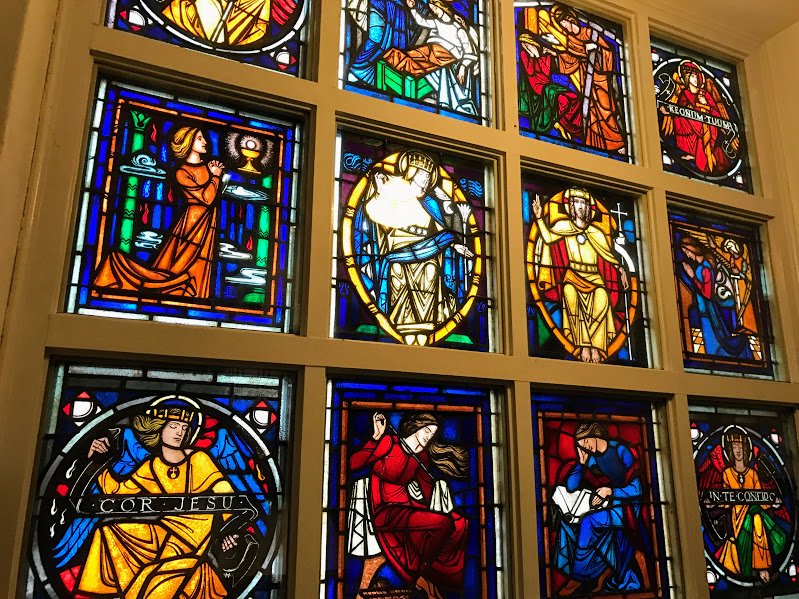
My issue with Fons Vitae is that it seems a very nice school for Havo level, but not perhaps so geared towards VWO, and even less towards gymnasium. I talked to one of the teachers, and he said that only 8-10 kids end up actually taking the Latin and Greek exams. Still, this was the school where we ended up taking a test Latin class, which made me very happy. Axa rolled her eyes at my excitement, but also glanced over the worksheet and filled it out during the first five minutes of class. I really like for her to have these confidence building experiences so she can feel going in to school next year that she will be successful. And it was such a fun blast from the past. I haven’t been to a Latin class in . . . well. Many years.
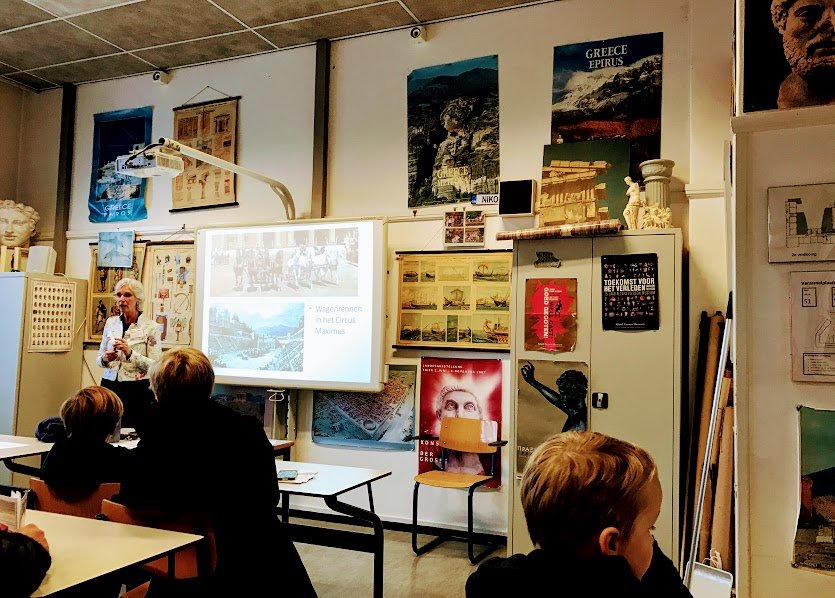
Now that Axa has quite a few school visits under her belt, I thought it would be interesting to ask what her criteria are for ranking schools. On her wishlist are a nice gym, close to home, and good test scores. But she also mentioned that she’s been attracted by the art rooms in some of the schools we’ve visited. I’ve definitely noticed her lingering, and the art rooms are some of the most fun places to visit, since the visual arts are perfect to showcase at an open house. She asked me to take this photo, because the characters are from Overwatch. Which of course gave me a chance to feel elderly and out of touch, since I’d never heard of Overwatch (I’ve since educated myself via Wikipedia).
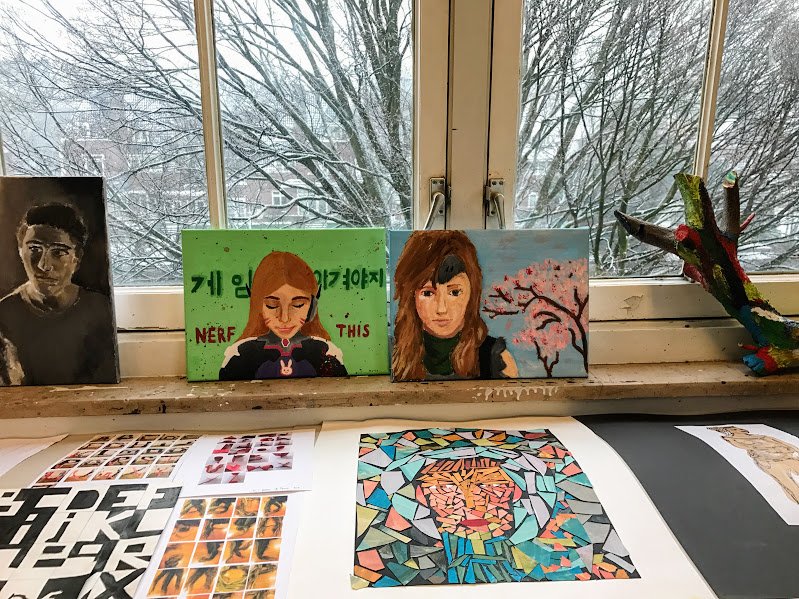
It was time to move on to our next school, and we walked outside to find that Amsterdam had become a winter wonderland.

Axa pelted me with snowballs during almost the entire bike ride, and only crashed her bicycle once.
Spinoza: In contrast to many of the schools we’ve visited, which feel like you might have walked into the 19th century, this is a school that prides itself on modernity.

There’s an emphasis on clean, bright colours and wide open spaces. Spinoza follows the “Dalton Plan”, which is an educational method developed during the first half of the 20th century by Helen Parkhurst, an educator influenced by Maria Montessori and John Dewey. Dalton education is cooperative, but also expects a high degree of responsibility from individual students, and allows them considerable independence in their learning. How exactly that plays out at Spinoza I’m not sure.

It is an “iPad school”, where a lot of textbooks and other materials are replaced by iPads. This is also the case at my children’s current primary school, where the teachers seem to do a pretty good job of utilizing the iPads, at least from what I’ve seen. I am no Luddite, but I have also witnessed a certain trend in education of schools thinking that just having computers and then iPads in classrooms was an exciting innovation, before really working out when and how they could best be used. I’m not overly thrilled at the idea of my daughter doing all her homework on an iPad (partly because parents I know whose children go to iPad schools say it’s difficult to know exactly WHAT their children are doing on the iPad at homework time, and I know from personal experience how distracting such devices can be). However, it’s not a deal-breaker.
I did notice that there was a room at the open day devoted to explaining resources and help for dyslexia/dyscalculia, so for children who do need that help, it might be a good choice. I am not sure what sorts of resources are available for children with learning differences at some of the other schools we’ve visited.
There was certainly some fun stuff going on at Spinoza. Here’s the classical languages room, where the students had made comic strips of mythological stories, written in ancient Greek.

Spinoza also has a spin-off school called Spinoza 20first, which focuses on teaching kids “21st century skills”, and a few rooms were devoted to this new school, although I gather the school itself is located elsewhere. I confess I didn’t read up on it beyond a cursory examination of their website. They are very small (100+ students) and seem to cater to kids who learn differently, which from what I’ve heard is a needed niche in the Dutch system. They had a lot of nice projects to show, including this rather spectacular cardboard model house.

We (and several other parents and children) did pause in the middle of our visit for a snowball fight out in the schoolyard.
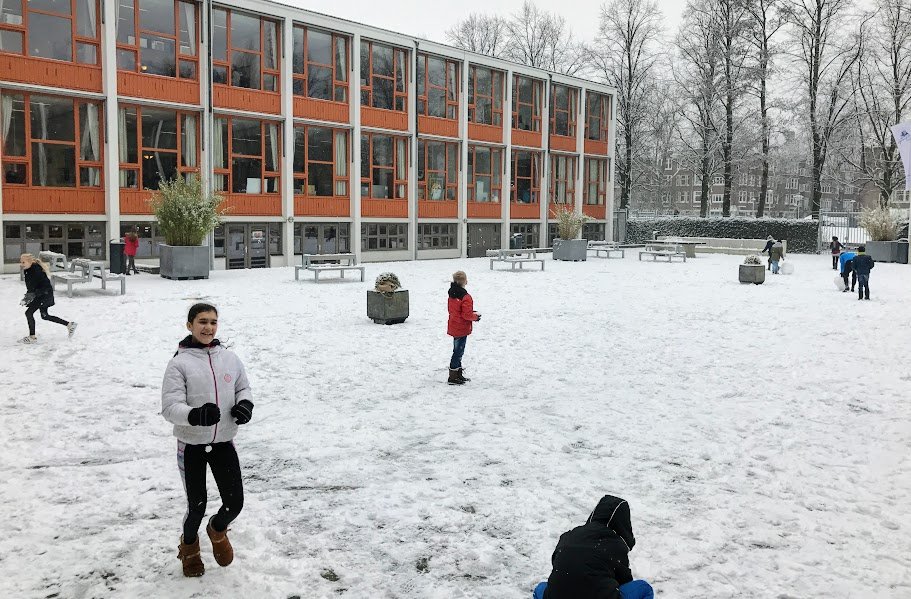
By this time we were pretty tired and hungry (for some reason we never managed to find the coffee and snacks at this school), and ready to go home. I do apologize to the administration at Spinoza for the fact that my daughter set combinations on an entire bank of lockers, and I was too tired and grumpy to do anything about it. If it helps, she did confess that the combination is 1234.

It’s hard to believe, but we only have two more schools left to visit! It looks like I’m actually going to survive this.